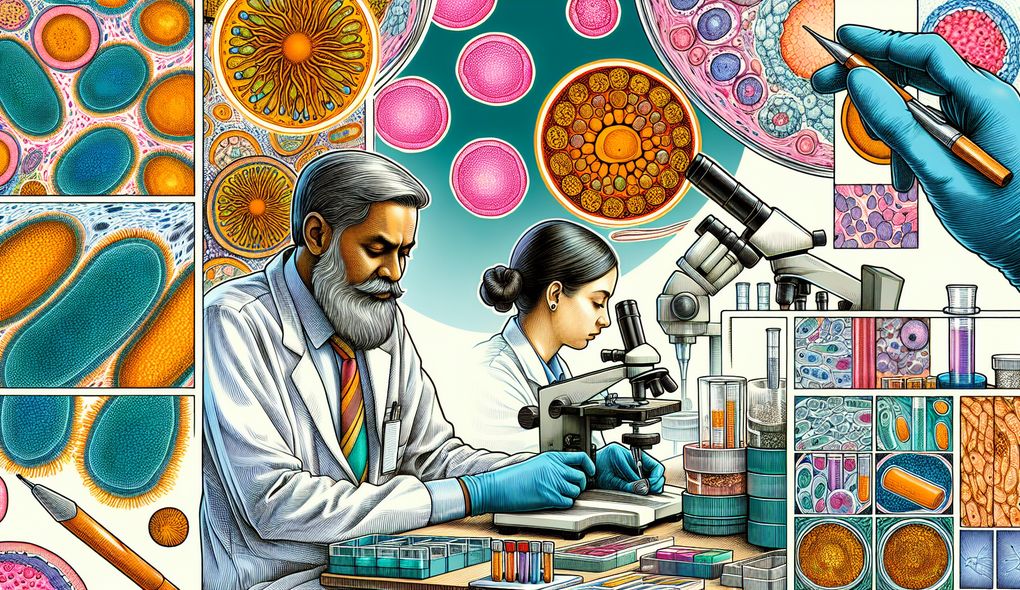What steps do you take to ensure accuracy and minimize errors in your work?
SENIOR LEVEL

Sample answer to the question:
To ensure accuracy and minimize errors in my work, I take several steps. First, I always double-check my work before finalizing it. This includes reviewing any data, calculations, or documentation that I have generated. Second, I rely on quality control measures such as using checklists and standardized procedures to ensure consistency in my work. Third, I maintain open communication with my colleagues and supervisors to clarify any uncertainties or seek feedback on my work. Additionally, I stay updated on the latest advancements in cytopathology by attending conferences and reading relevant literature. Finally, I am diligent about following regulatory standards and laboratory protocols to ensure accuracy and compliance.
Here is a more solid answer:
Ensuring accuracy and minimizing errors in my work is of utmost importance as a cytopathologist. I employ a systematic approach to achieve this. Firstly, I meticulously review all samples and data, cross-referencing them to avoid any discrepancies. This includes double-checking the results obtained from microscopic analysis or diagnostic tests. Additionally, I use comprehensive checklists and standardized protocols to maintain consistency and reduce the likelihood of errors. I also proactively communicate with my colleagues and healthcare professionals to clarify any uncertainties and gather different perspectives, which contributes to a more accurate diagnosis. Furthermore, I stay updated with the latest advancements in cytopathology by attending conferences, participating in workshops, and reading extensively, enabling me to utilize the most current and effective diagnostic techniques. Lastly, I strictly adhere to regulatory standards and laboratory protocols to ensure accuracy, precision, and compliance in my work.
Why is this a more solid answer?
The solid answer enhances the basic answer by providing specific examples and details. It emphasizes the systematic approach, meticulous review, use of checklists, effective communication, continuous learning, and adherence to regulatory standards. However, it can be further improved by incorporating more examples of past experiences or projects related to accuracy and error minimization.
An example of a exceptional answer:
To ensure accuracy and minimize errors in my work as a cytopathologist, I follow a comprehensive set of steps. Firstly, I prioritize a thorough and meticulous approach to each task, ensuring that I allocate sufficient time for careful examination and analysis of cell samples. This includes conducting multiple reviews of the slides, cross-referencing any abnormal findings with relevant references or databases, and consulting with colleagues or experts when required. Additionally, I maintain a detailed log of all steps taken during analysis, allowing for traceability and facilitating error detection and correction. Furthermore, I actively participate in quality assurance programs, conducting internal proficiency testing to identify potential areas of improvement and implementing corrective actions. To stay at the forefront of the field, I actively engage in research and attend conferences, where I regularly present my findings and stay updated on the latest techniques and technologies in cytopathology. Finally, I foster an environment of open communication and collaboration within the team, promoting the exchange of ideas and feedback to further enhance accuracy and error minimization.
Why is this an exceptional answer?
The exceptional answer builds upon the solid answer by providing additional details and examples, such as conducting multiple reviews, maintaining a detailed log, participating in quality assurance programs, actively engaging in research, and fostering teamwork. It showcases the candidate's commitment to accuracy and error minimization through a comprehensive approach. The addition of internal proficiency testing and emphasis on collaboration further enhances the exceptional answer. However, the answer could benefit from specific examples of how the candidate has implemented these steps in their past work or projects.
How to prepare for this question:
- Familiarize yourself with quality control measures and standardized protocols in cytopathology to emphasize attention to detail and adherence to procedures.
- Reflect on past experiences where accuracy and error minimization were crucial, and prepare examples to showcase your expertise.
- Stay updated on the latest advancements in cytopathology by reading peer-reviewed medical journals and attending conferences.
- Highlight instances where effective communication and collaboration led to more accurate diagnoses and improved patient outcomes.
- Prepare to discuss your involvement in research projects or quality assurance programs and how they have contributed to accuracy and error minimization.
What are interviewers evaluating with this question?
- Attention to Detail
- Communication
- Follows Procedures
- Continuous Learning

